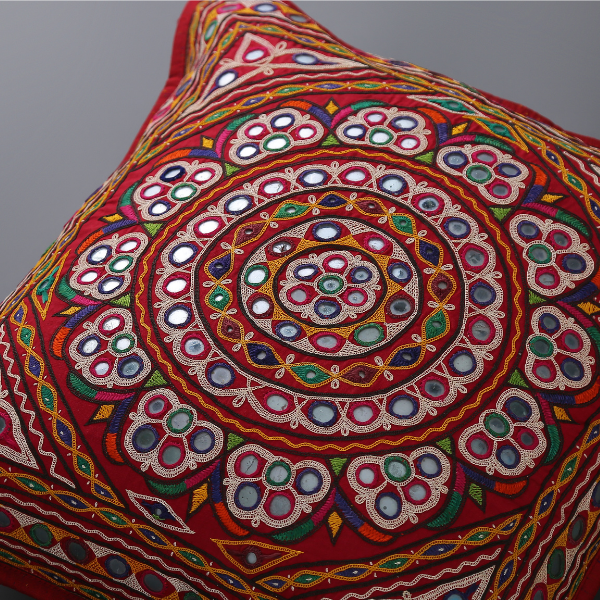
Map Loading...
Rabari Hand Embroidery
Kutch
The Rabari embroidery gets its name from the community that engages in the craft. The Rabari (Rebari) are a nomadic community that traces its origins in Rajasthan and have settled over time in the semi-desert areas of Kutch, a district of Gujarat. The community is well known for its magnificent embroidery that is symbolic of their nomadic traditions. The craft encompasses the mythology, rituals, culture and life of the Rabaris.
There are many subgroups within the Rabari community and the embroidery stitches and style also vary from subgroup to subgroup. A commonality by which the craft is recognised is its usage of mirrors (shisha) surrounded by colourful embroidery. Along with mirrors, the chain stitch method is used to outline the garments decoratively. Varying methods of stitches are also used such as the interlacing stitch (bavaliyo), broad chain stitch, herringbone stitch, additional enhancement stitches (Bakhiyo, dana) and so on. Cotton or silk threads in bright colours such as yellow, pink, green, red and violet are used in this process.
The designs are usually inspired by mythology and their desert habitations. Motifs special to their community such as Mor (peacock), Ambo (mango tree), parrots, elephants and so on are employed. The craft is practised usually by women. A large part of their work makes up their bridal trousseau. This practise is however discouraged nowadays and the craft is now mainly a means to earn a livelihood.
Rabari embroidery is not just limited to clothes, it is also used for ornamenting shawls, bags, bedcovers, doorway hangings and even cattle and horses.
In present times, the Rabari embroidery of Kutch has imbibed within it a lot of contemporary designs and fashion. The style of embroidery though traditional has been evolving continuously to match up to new trends. Just as the craft gave a new dimension and colour to the stark landscape of Kutch, it continues to inspire and colour modern-day designs.
Craft
Kachchhi embroidery
Material
Hand Embroidery, Cotton, Silk
Technique
Hand embroidered
Showcase




